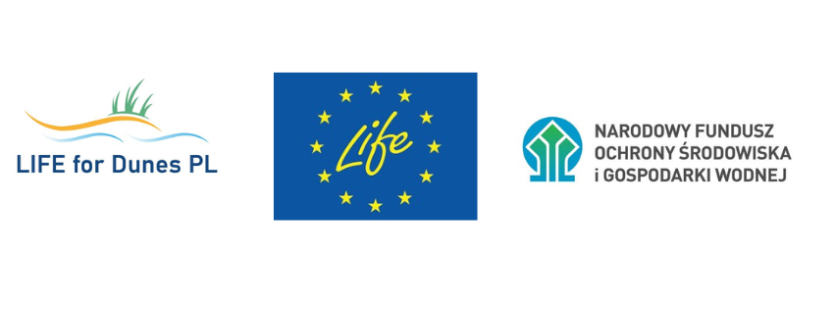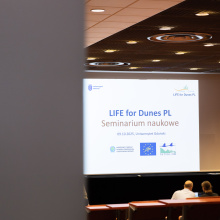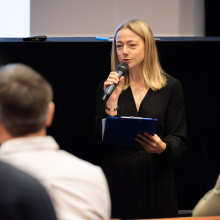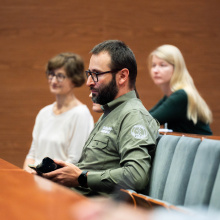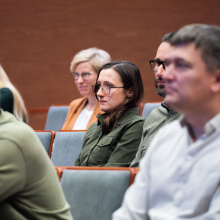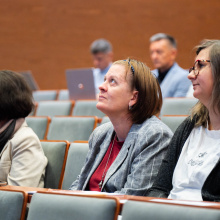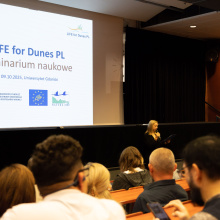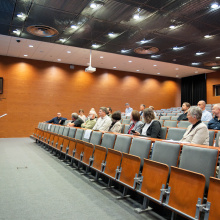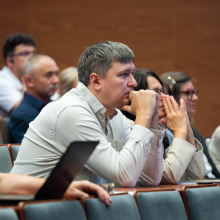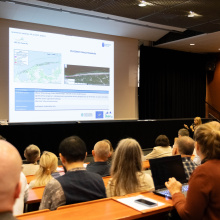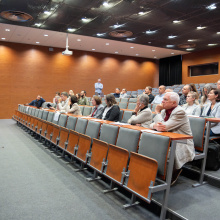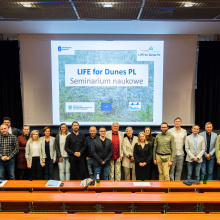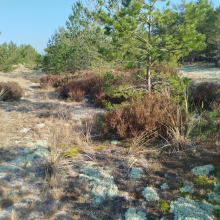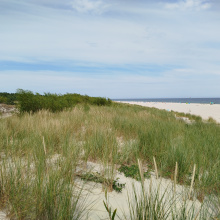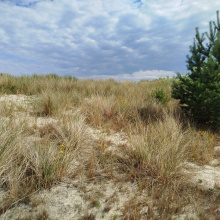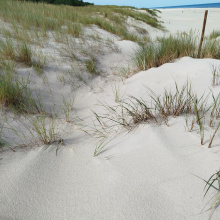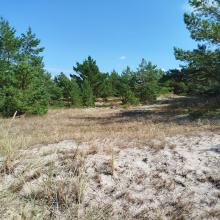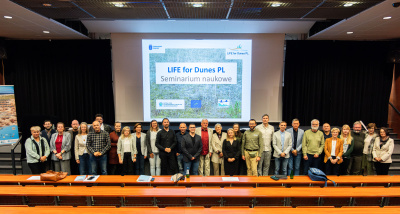
fot. Sebastian Jętczak
The first stage of fieldwork has been completed as part of the LIFE for Dunes PL project, which aims to protect and renaturalise dune habitats on the southern coast of the Baltic Sea. The project, led by dr Magdalena Lazarus from the Department of Plant Taxonomy and Nature Conservation at the Faculty of Biology of the University of Gdańsk, will be implemented over a period of six years. On 9 October 2025, a scientific seminar was held with the participation of Polish partners and the project's Scientific Council, during which the results of the work carried out so far were summarised and preparations for a strategy for further action were begun. The LIFE for Dunes PL project, led by the University of Gdańsk, has received over €8.5 million in funding from the EU's LIFE programme. The project was also co-financed by the National Fund for Environmental Protection and Water Management in the amount of over PLN 10 million.
The first stage of field work began in the spring of 2025. The activities mainly included the preparation of detailed documentation on the condition of individual habitats covered by the project, the identification of specific threats, and the organisation of educational meetings for local communities.
Among the basic problems identified by researchers within the natural habitats of white and grey dunes covered by the project were:
- the presence of geographically and ecologically alien species (related, among other things, to planting, the disposal of garden plants and soil overfertilisation)
- tree succession (and the associated ageing of habitats)
- tourist pressure and the resulting mechanical destruction of vegetation cover and littering
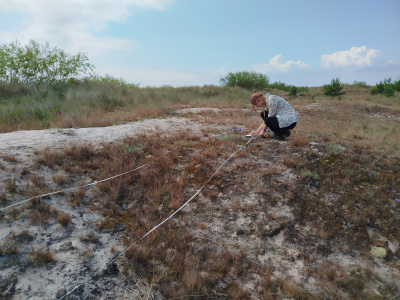
Field works. Photo: LIFE for Dunes PL archives
The work carried out made it possible to determine which problems occur at individual sites and to what extent. In many places, increased anthropogenic pressure was found, related to tourist activity, entering beaches outside designated areas, and even driving quad bikes on the dunes. Among the species geographically alien to the dune habitats of the southern Baltic coast, the most common are black pine, wrinkled rose, Caspian willow and laurel willow - their presence is related to plantings carried out in the last decades of the last century.
During the scientific seminar, the Scientific Council and project partners discussed the best methods for further action, both in strategic terms and in the context of solving specific problems identified on individual sections of the coast. Among the key decisions were those concerning the level of both necessary and possible interventions aimed at renaturalising habitats and removing alien species.
We encourage you to follow the project's profile on Facebook and the YouTube channel LIFE for Dunes PL - YouTube.
The Scientific Council of the project consists of:
- Dr Damian Moskalewicz (University of Gdańsk)
- Dr Andrzej Ginalski (University of Gdańsk)
- Prof. dr hab. Jacek Herbich (University of Gdańsk)
- Dr hab. Maria Herbichowa (University of Gdańsk)
- Dorota Siemion (Regional Directorate for Environmental Protection in Gdańsk)
- Agata Lisowska (Regional Directorate for Environmental Protection in Gdańsk)
- Dr Krzysztof Gos (University of Gdańsk)
- Dr hab Joanna Rotnicka-Dłużewska, prof. UAM (Adam Mickiewicz University in Poznań)
- Mgr inż. Paweł Pawlaczyk, (Naturalists' Club)
